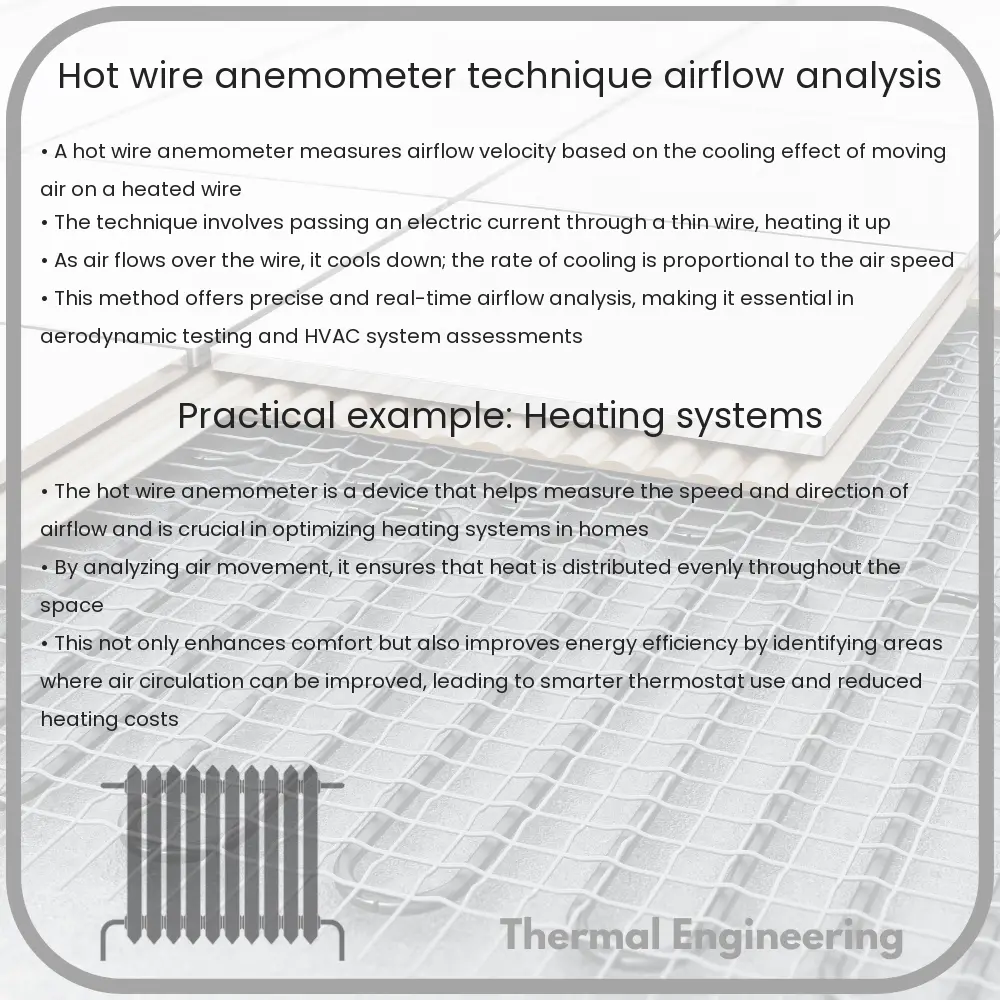Learn how the hot wire anemometer accurately measures airflow velocity and direction, essential for various engineering applications.

Understanding the Hot Wire Anemometer and Its Application in Airflow Analysis
A hot wire anemometer is a precise and effective tool used in engineering to measure the velocity and direction of air flow. The device operates on the principle of heat transfer from a thin wire to the surrounding air. Understanding how the hot wire anemometer works and how it’s used in airflow analysis can greatly aid in fields like HVAC (heating, ventilating, and air conditioning) systems, aerodynamics studies, and environmental monitoring.
Working Principle of Hot Wire Anemometers
The core component of a hot wire anemometer is a thin wire, which is typically made of tungsten or platinum, and measures about 1 to 100 micrometers in diameter. This wire is electrically heated to a temperature that is higher than the ambient temperature. As air passes over the wire, it cools down, and this cooling effect is dependent on the speed of the air flow. The primary principle that governs this cooling process can be explained through King’s Law, which relates the heat loss from the wire to the air velocity:
V = A + B * sqrt(I2 – I02)
where:
- V is the air speed
- A and B are calibration constants
- I is the current maintaining the wire temperature in moving air
- I0 is the current needed to maintain the same temperature in still air
This equation shows that the velocity of the airflow can be determined by measuring the electrical current that maintains the wire’s temperature.
Techniques Used in Airflow Analysis
Hot wire anemometers can be deployed in various techniques depending on what aspect of airflow is being analyzed:
- Constant Temperature Anemometry (CTA): Maintains the wire at a constant temperature. This technique uses a feedback system that adjusts the electrical current as necessary to compensate for cooling effects due to air velocity changes.
- Constant Current Anemometry (CCA): Maintains constant current flowing through the wire. Here, any temperature change due to airflow is observed through changes in the electrical resistance of the wire.
Applications of Hot Wire Anemometry
Hot wire anemometers are versatile in their applications. Some of the common uses include:
- Aerodynamic Testing: Used to measure air velocity in wind tunnels as well as around cars, aircraft, and other objects.
- HVAC Systems: Helps in assessing the performance and efficiency of heating, ventilating, and air conditioning systems by measuring airflow rates and directions.
- Environmental Monitoring: Used to study the patterns of air pollutants dissemination or to analyze wind patterns in meteorological studies.
This versatility makes hot wire anemometers a reliable choice for professionals in various fields of engineering, offering detailed information about air movement which is crucial in many contexts.
Benefits and Limitations
Hot wire anemometers offer numerous benefits including high accuracy, responsiveness, and the ability to measure very low air velocities. However, they are sensitive to dirt and contaminants which can adhere to the wire, potentially altering the accuracy of measurements. Regular calibration and maintenance are required to ensure precision in long-term use.
In conclusion, the hot wire anemometer is an invaluable tool in engineering for airflow analysis. By understanding the physics behind its operation and its application in real-world scenarios, engineers can continue to deploy this tool effectively across a range of disciplines.